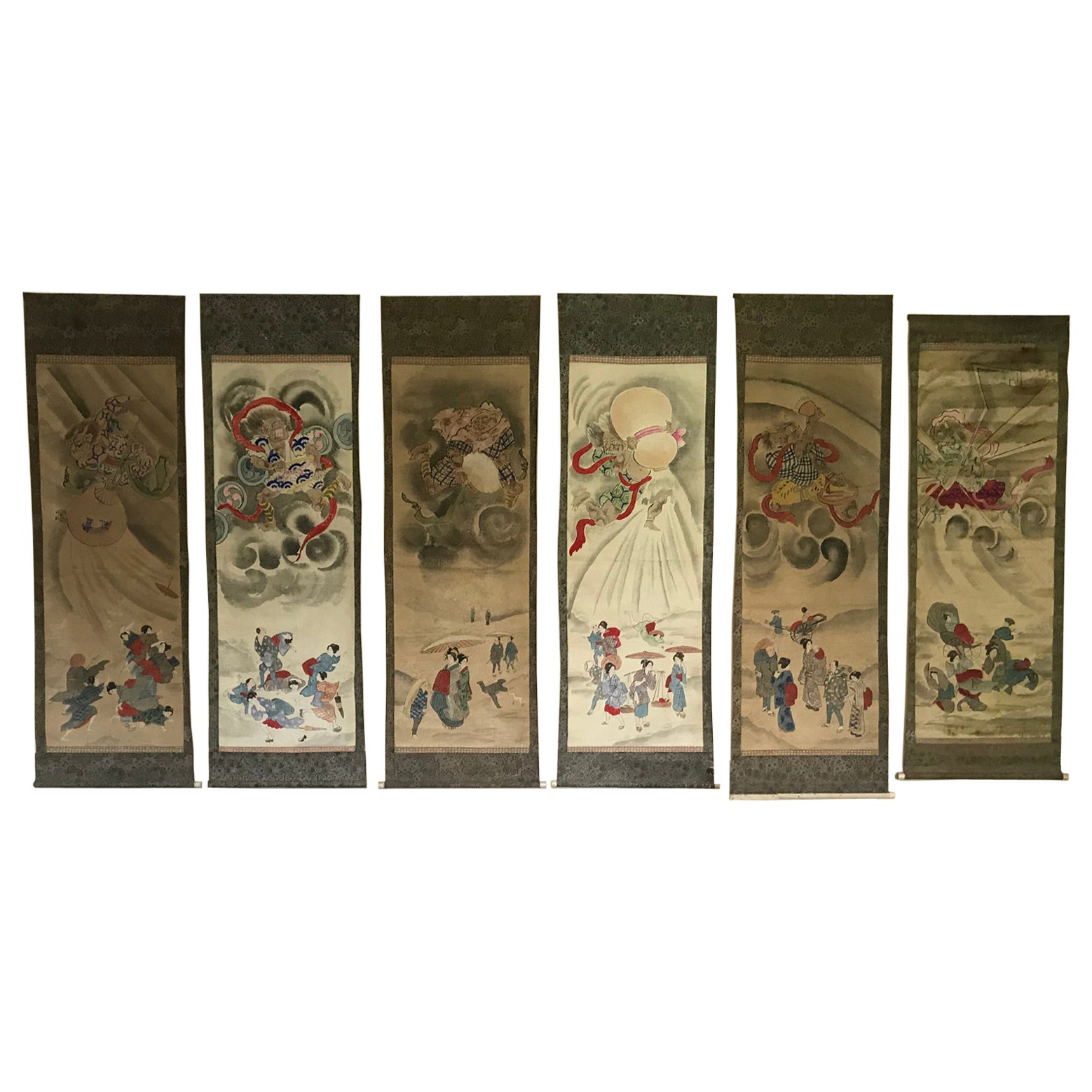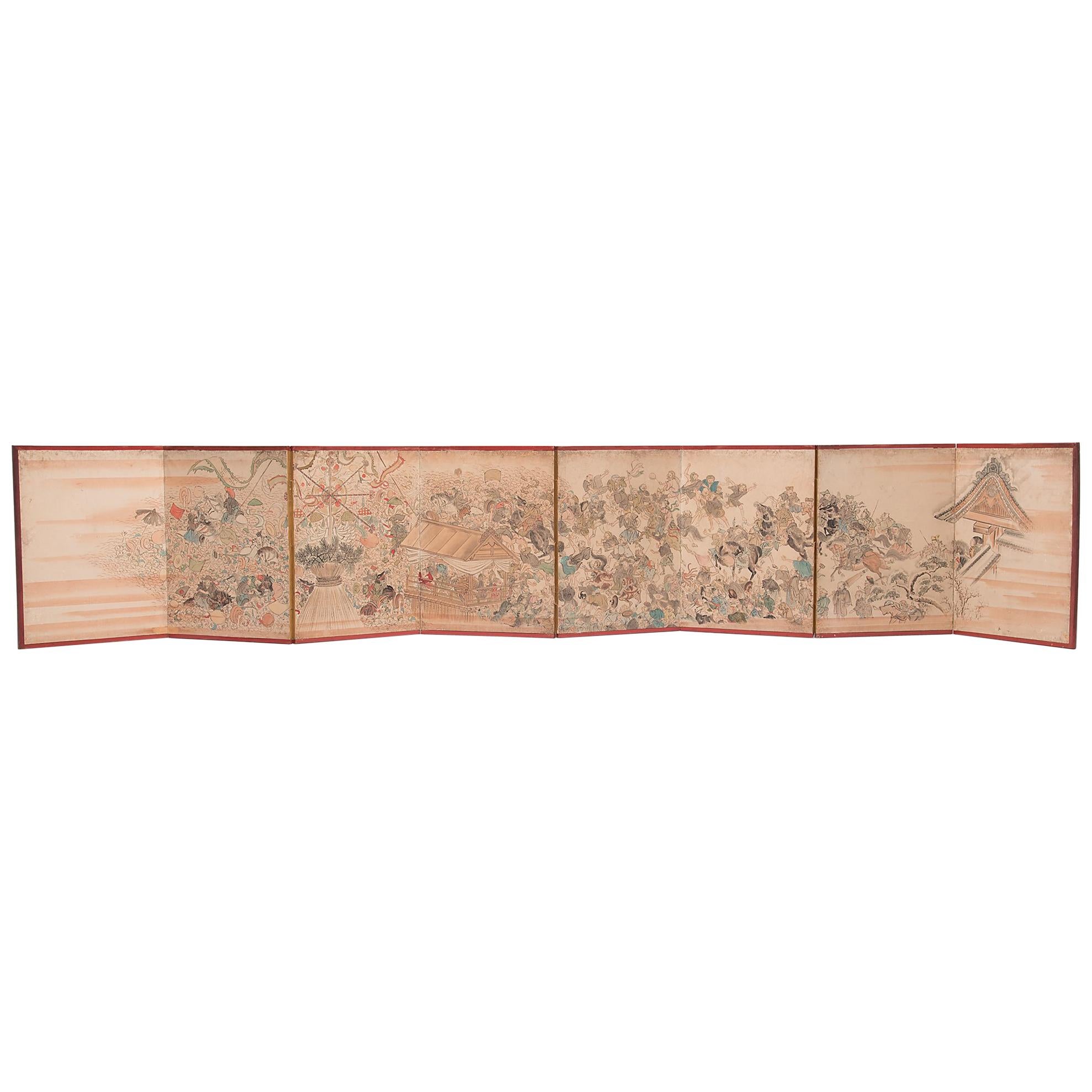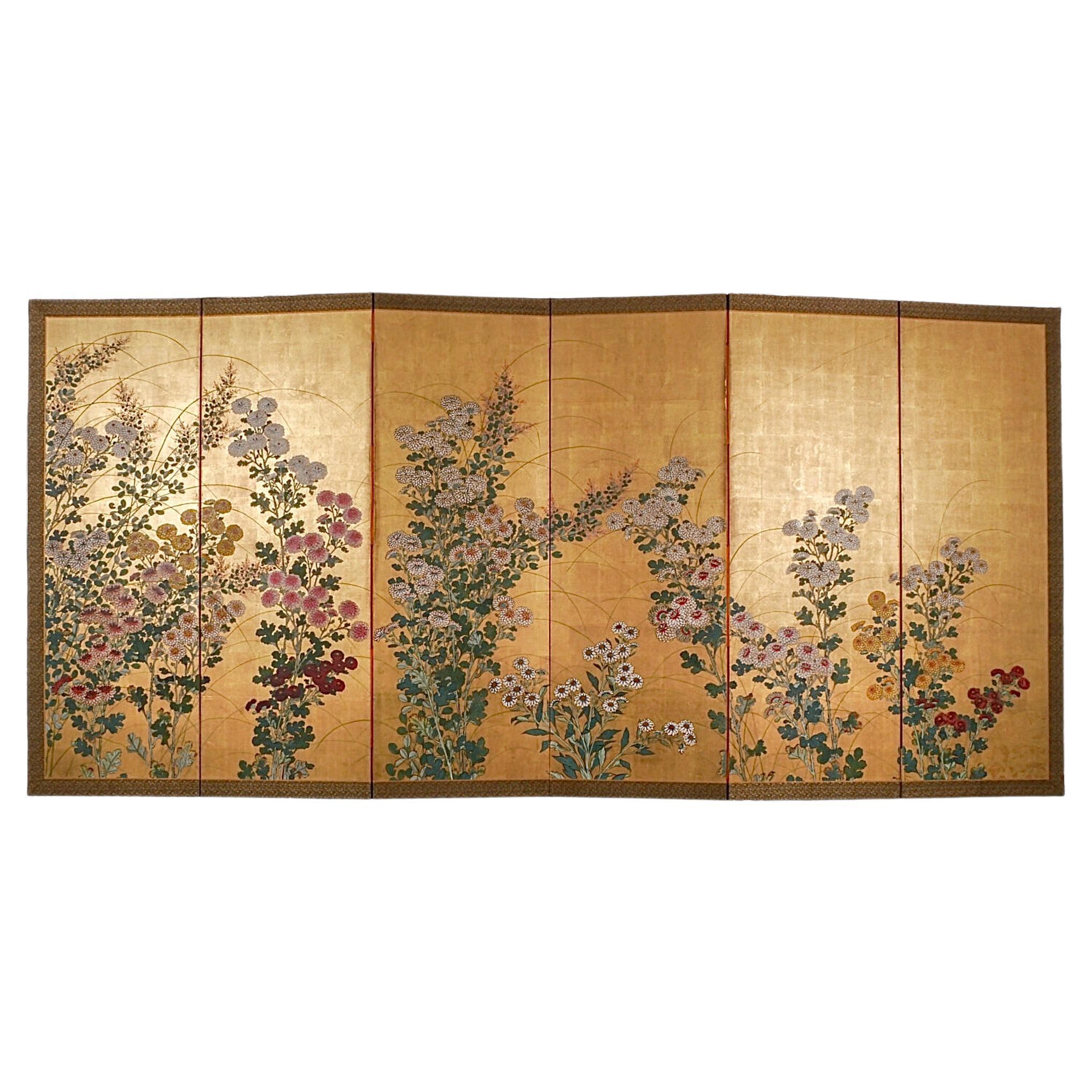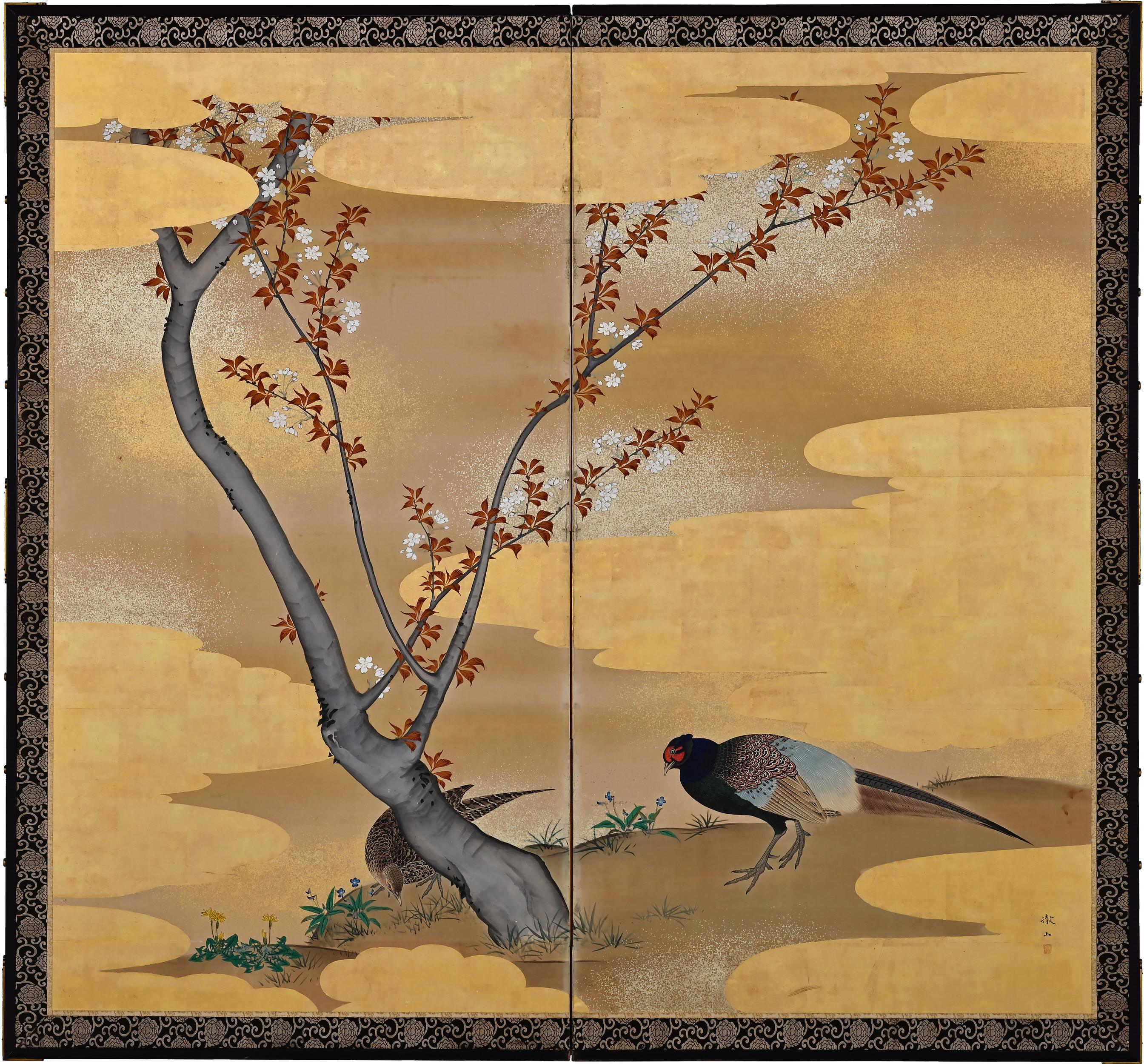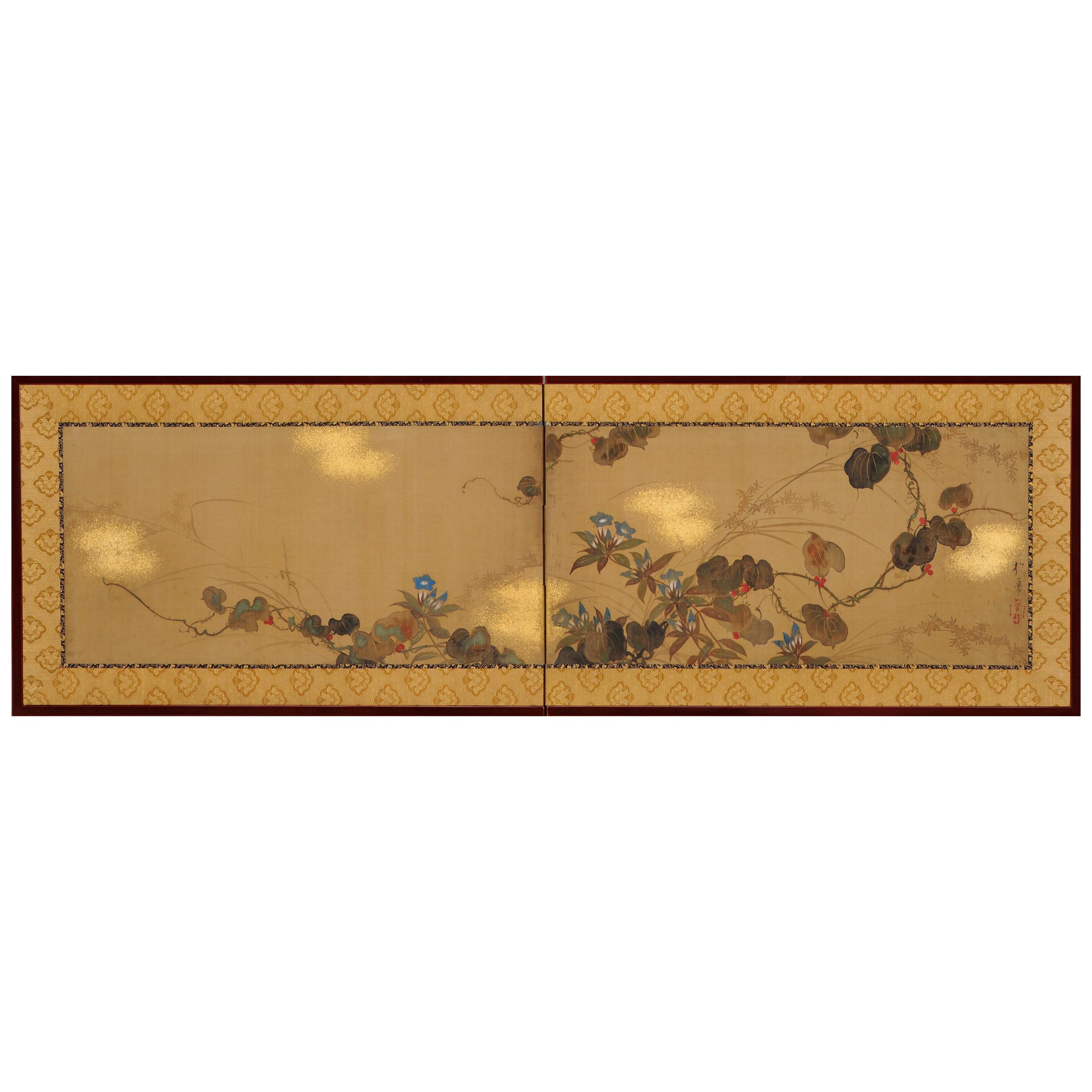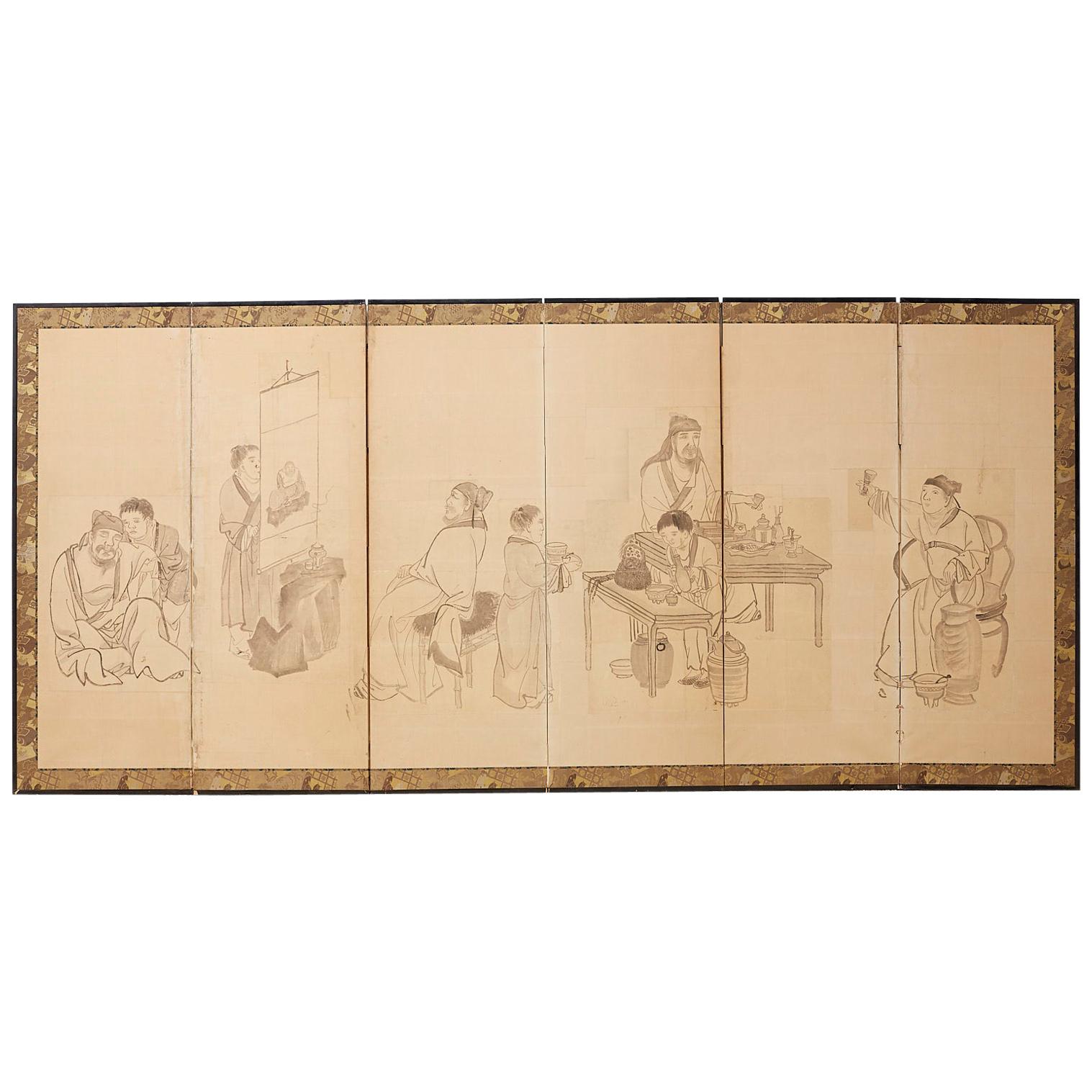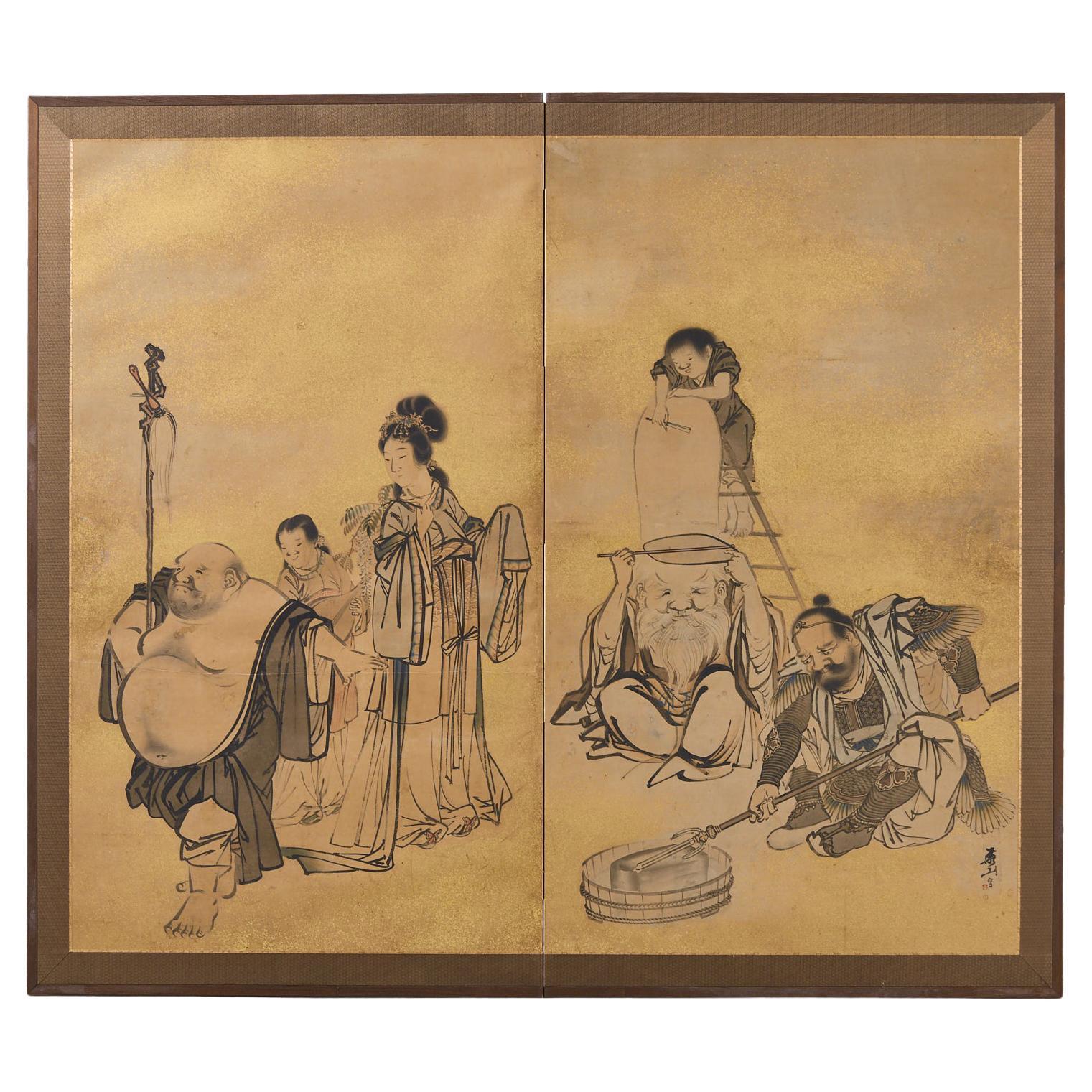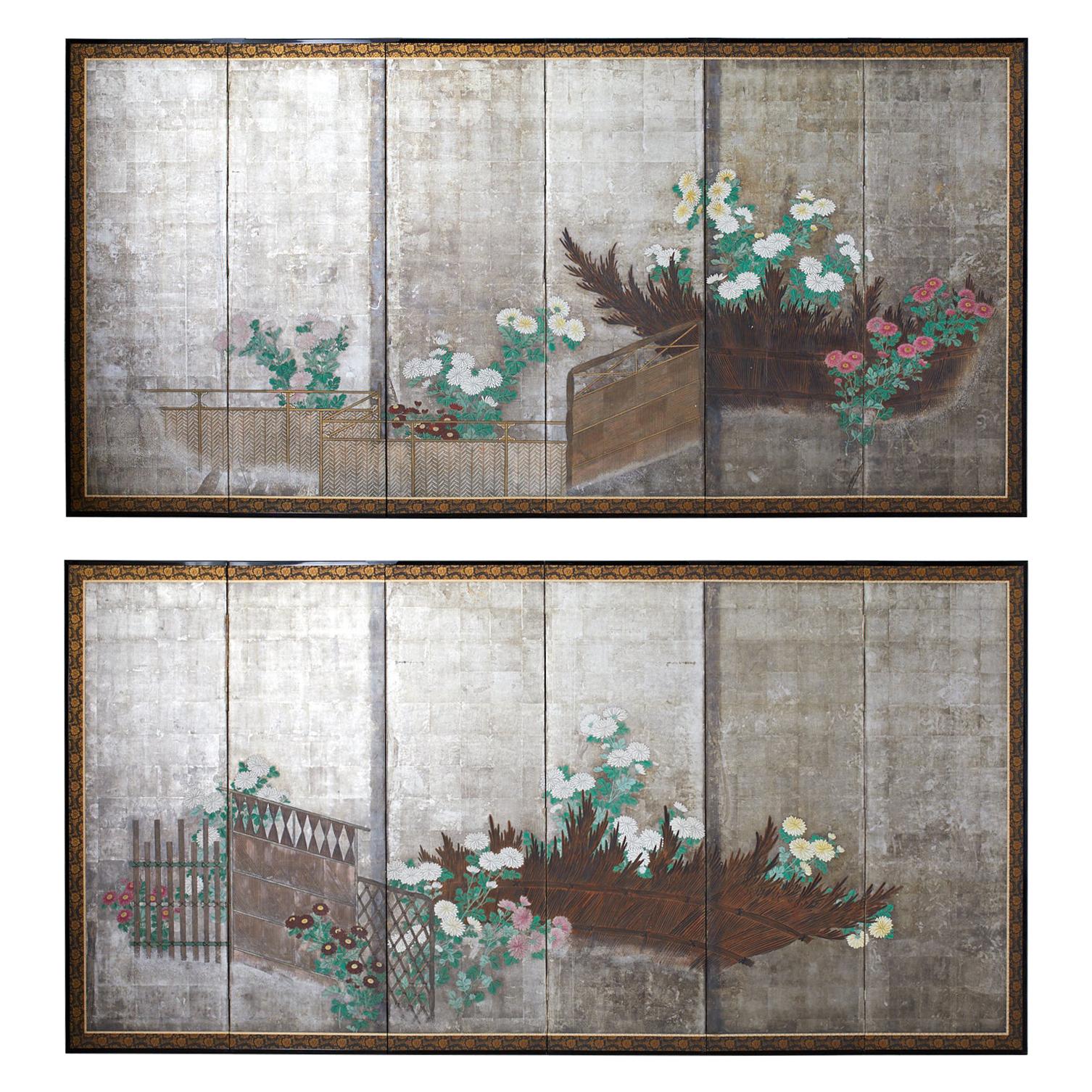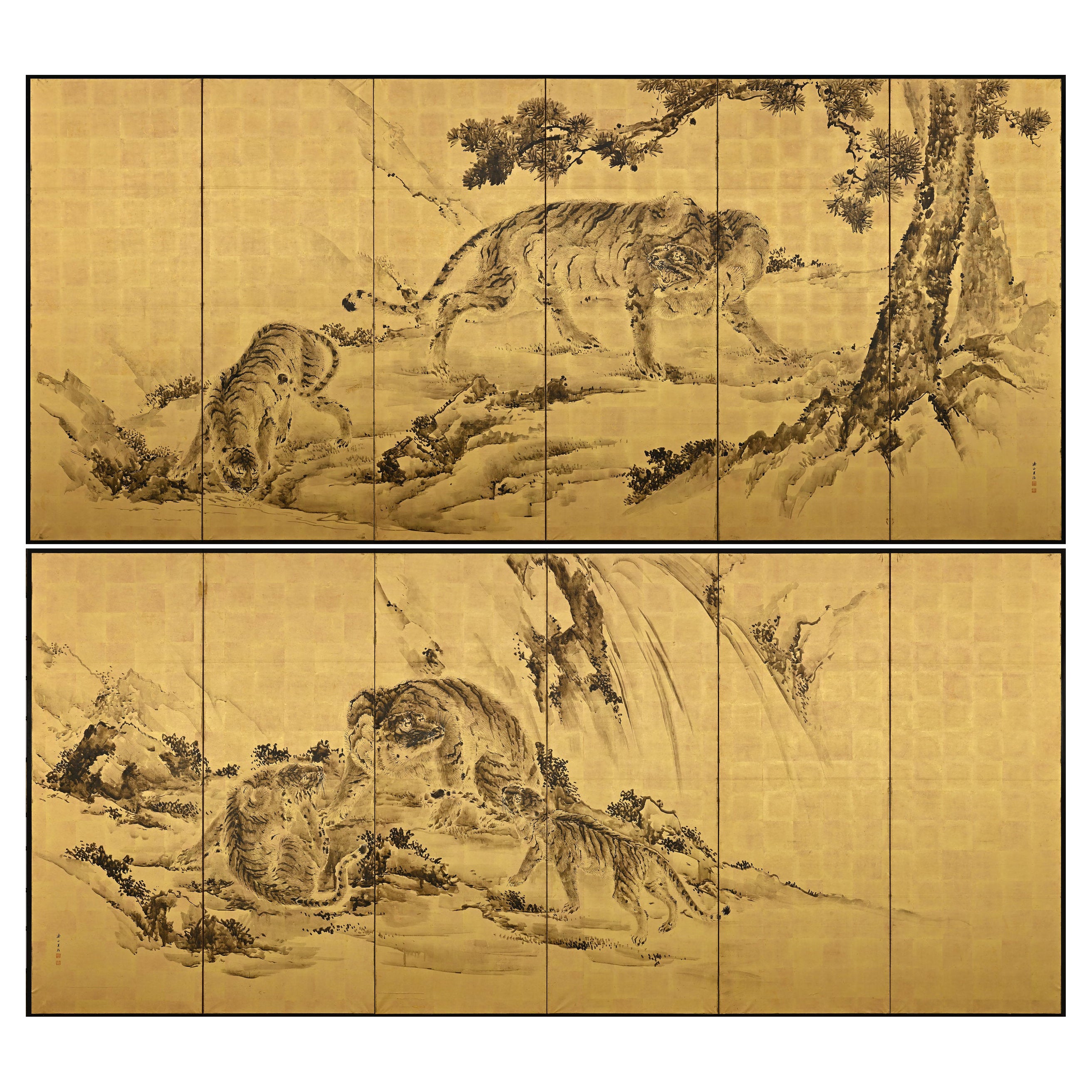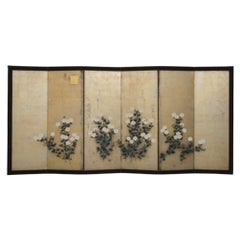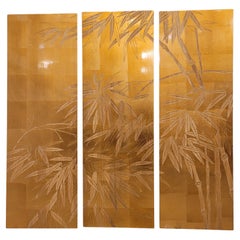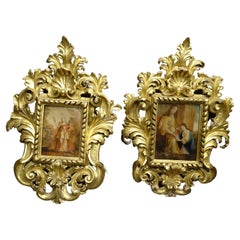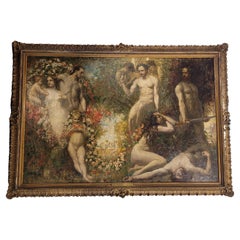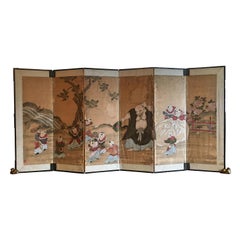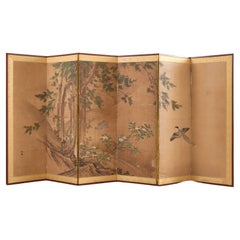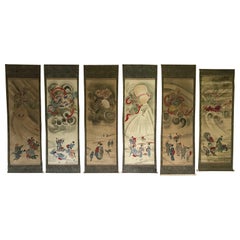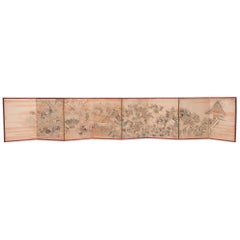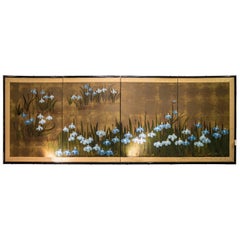
19th Century Edo Painted with Iris Japanese Signed Byobu Screen
View Similar Items
Want more images or videos?
Request additional images or videos from the seller
1 of 18
19th Century Edo Painted with Iris Japanese Signed Byobu Screen
About the Item
- Dimensions:Height: 29.53 in (75 cm)Width: 78.75 in (200 cm)Depth: 0.79 in (2 cm)
- Style:Edo (Of the Period)
- Materials and Techniques:
- Place of Origin:
- Period:
- Date of Manufacture:circa 1890
- Condition:Wear consistent with age and use.
- Seller Location:Valladolid, ES
- Reference Number:1stDibs: LU2943311170093
About the Seller
4.7
Gold Seller
Premium sellers maintaining a 4.3+ rating and 24-hour response times
Established in 1990
1stDibs seller since 2017
157 sales on 1stDibs
Typical response time: 1 hour
Authenticity Guarantee
In the unlikely event there’s an issue with an item’s authenticity, contact us within 1 year for a full refund. DetailsMoney-Back Guarantee
If your item is not as described, is damaged in transit, or does not arrive, contact us within 7 days for a full refund. Details24-Hour Cancellation
You have a 24-hour grace period in which to reconsider your purchase, with no questions asked.Vetted Professional Sellers
Our world-class sellers must adhere to strict standards for service and quality, maintaining the integrity of our listings.Price-Match Guarantee
If you find that a seller listed the same item for a lower price elsewhere, we’ll match it.Trusted Global Delivery
Our best-in-class carrier network provides specialized shipping options worldwide, including custom delivery.More From This Seller
View AllByôbu Screen 屏風 Chrysanthemums, Rinpa School, Edo / Meiji period
By Rinpu Sasaki
Located in Valladolid, ES
One of a kind and very refined Japanese screen or byôbu 屏風 with six folding panels depicting chrysanthemums on a gold background. Fine lacquered wooden frame with metal fittings that protects and supports the work. Dating from the 19th century, between the late Edo period (1603-1868) and the early Meiji period (1868-1912),
The main motif of this beautiful byôbu is a serene Rinpa School painting on a gold background depicting a peaceful flower garden filled with white chrysanthemums. The painting reflects the gentle elegance characteristic of the Rinpa school, known for its refined depiction of nature. In Japanese culture, chrysanthemums symbolize happiness, love, longevity and joy.
Rinpa or Rimpa is the name of one of the most important schools of Japanese painting. It emerged in the 17th century with the artists Honami Kōetsu...
Category
Antique 1880s Japanese Edo Paintings and Screens
Materials
Gold Leaf, Silver Leaf
Conjunto de paneles Chinos “Bambú”, Madera de Vernicia Fordii
By Chow's Oriental Furniture Co.
Located in Valladolid, ES
Very refined and beautiful set of three hand-carved and gilded wood panels, masterfully depicting the bamboo plant, made in China in the 1980s. The highlight of this piece is not its...
Category
Vintage 1980s Chinese Chinese Export Paintings and Screens
Materials
Gold Leaf
18th Century Spanish Painting on the Glass, Couple of Painting, Gildwood Frame
Located in Valladolid, ES
Amazing pair of baroque cornucopias, with painted glass, s. XVIII, Spanish origin, Andalusian school (Córdoba)
Outstanding pair of Cornucopias in carved wood and gilwood decorated w...
Category
Antique 1780s Baroque Paintings
Materials
Glass, Giltwood, Paint
$8,027 Sale Price / set
20% Off
Belgian Painting Allegoric signed by P. Swyncop
By Philip Swyncop
Located in Valladolid, ES
Ó/L “Peace and the arts are worth more than the brutal glory of weapons”, Philippe Swyncop, 1903 – Belgium, Flemish School
Exquisite oil on canvas si...
Category
Antique Early 1900s Belgian Art Nouveau Paintings
Materials
Paint, Canvas
$9,965 Sale Price
20% Off
Catalan Painting St. James’s Park, London”, Josep Mª Vayreda Canadell signed
By Spanish Manufactory
Located in Valladolid, ES
Amazing and Exquisite view of Saint James's Park, a charming British park located in the Westminster area of central London. It is the oldest of the city's Royal Parks. The horizon...
Category
Vintage 1970s Spanish Modern Paintings
Materials
Canvas, Paint
France Oil on panel “Marina”, French School
By French House & Garden
Located in Valladolid, ES
Exceptional painting depicting a Mediterranean seascape. The two fishing boats in the center of the composition stand out. In the far distance, a village with a small harbor, charact...
Category
Antique Early 1900s French Beaux Arts Paintings
Materials
Wood, Giltwood, Paint
You May Also Like
Japanese Six Panel Screen with Hotei, Edo Period, Early 19th Century
Located in Austin, TX
A delightful Japanese six panel painted paper screen featuring the beloved figure Hotei, Edo Period, early 19th century.
Hotei, called Budai in China, and known as the Laughing Buddha or Fat Buddha in the West, is considered to be an emanation of Maitreya, the Buddha of the Future.
In Japan, he also holds a special place as one of the Seven Lucky Gods, being the god of fortune, and protector of children.
He is always portrayed as a mirthful and corpulent man, dressed in loose robes that show off his round belly. He carries a sack with him, said to be filled with treasure. As the protector of children, he is often portrayed with them playing on or around him, as he is here. The children portrayed in this screen are dressed in Chinese style clothing...
Category
Antique Early 19th Century Japanese Edo Paintings and Screens
Materials
Silk, Paper
19th Century Japanese Edo Six Panel Kano School Landscape Screen
Located in Rio Vista, CA
Late Edo period 19th century Japanese six-panel landscape screen featuring a cypress tree over a flowering hibiscus with a pair of hototogisu birds. Kano school painted with ink and ...
Category
Antique 19th Century Japanese Edo Paintings and Screens
Materials
Silk, Wood, Paper
Set of 6 Large Kakemonos Japanese Mythology, 19th Century Japan circa 1800 Edo
Located in Beuzevillette, FR
Beautiful set of 6 large kakemonos from 19th century Japanese mythology.
Paper support with a canvas pasted on the paper
Wonderful set that is part of Japan's history and beliefs
When not hung, the Kakemonos are rolled up.
circa 1800 - Japan - Edo Period
A kakemono translates as "object to hang". In Japan this refers to a painting or calligraphy, most often done on silk or paper framed in a scroll that was intended to be hung on walls or in public lighting. This particular form, which allows them to be in a roll, dates back to the Tang dynasty in China (this would be related to the copying and preservation of ancient Buddhist texts). A Kami is a deity or spirit worshipped in the Shinto religion. A Yokai is a spirit, ghost, demon, or strange apparition from the creatures of Japanese folklore.
Each of these kakemonos represents a unique story:
- A kami, a Japanese deity, is shown painting a rainbow. Indeed, he performs the action with his right hand while his left hand holds a kind of basket with three pots of paint. This kami has a rather closed attitude. He is standing in a dark and tormented sky. Below this figure, 8 villagers are dressed in traditional Japanese clothes. Their faces are softened. They are not afraid of the elements made by the kami above their heads.
- A character with an unreal look is holding a kind of jar with his two hands, which he spills on human figures above. This being is floating in the air, probably a character from mythology, perhaps Susanoo. Underneath, villagers on umbrellas. They are trying to protect themselves as best they can from what is falling on them. One of them is carrying baskets with fish on her shoulders. A character in the background is thrown forward and falls.
- On this kakemono, the god Raijin, dressed in a white and blue outfit, strikes the sky with his two drum hammers to create lightning and its thunderous sound. Surrounded by Tomoe and a long red scarf, Raijin, enraged and with dishevelled hair, creates a dark and violent storm. The villagers seem frightened by this meteorological phenomenon. One of the villagers can be seen fainting in the arms of a man. This scene may seem chaotic, but Japanese legend tells us that once a field is struck by lightning, the harvest is good.
- On this kakemono, we see an unreal-looking figure holding a fan, as if he were sweeping away the bad weather, or simply producing gusts of wind. He is probably the kami of wind and air, Shina tsu-hiko. The figures below him seem surprised by so much wind. An umbrella flies away on the left, the women hold their hair and scarf, the clothes are caught in the power of the wind, there is even a woman on the ground on the bottom left.
- This Kakemono represents a short moment. This Raiju is a yokai (ghost spirit...
Category
Antique 19th Century Japanese Edo Paintings
Materials
Paper
Japanese Edo Period Festival Screen, c. 1750
Located in Chicago, IL
This 18th century folding screen is a stunning example of Japanese artistry. Beautifully painted with delicate brushwork, the evocative sc...
Category
Antique Mid-18th Century Japanese Edo Paintings and Screens
Materials
Paper
Japanese Six-Panel Screen Byobu With Chrysanthemums And Autumn Grass and Flower
Located in Torino, IT
The 19th Century Six-Panel Japanese folding screen "Byōbu" usually used in the most important Japanese house to stop wind and also to separate different space of the same big room de...
Category
Antique Mid-19th Century Japanese Edo Paintings and Screens
Materials
Gold Leaf
Japanese Edo Six Panel Screen Yoshitsune and Benkei
Located in Rio Vista, CA
Spectacular 19th century Japanese late Edo period six-panel byobu screen depicting Yoshitsune and Benkei, two heroes of Japanese folklore. Crafted in ink and natural color pigments on mulberry paper with thick gold leaf borders on each panel. The character Yoshitsune is seated under a blossoming cherry tree in full armor holding a fan. The warrior priest or monk Benkei is depicted kneeling on a leopard skin...
Category
Antique 19th Century Japanese Edo Paintings and Screens
Materials
Brass, Gold Leaf
$3,400 Sale Price
29% Off
Recently Viewed
View AllMore Ways To Browse
Gold Byobu
Gold Paper Byobu
Japanese Painted Screen Floral
Japanese Screen Irises
Japanese Iris Byobu Screen
Vintage Asian Art Paintings
Chinese Art Panel
Japanese Screen Art
Painted Asian Screens
Early 20th Century Screen
Japanese Bamboo
Japanese Gold Leaf
19th Century Chinese Painting
Japanese Bamboo Furniture
Antique Japanese Frame
Japanese Folding
Asian Screens And Panels
Asian Art Scrolls


